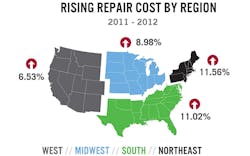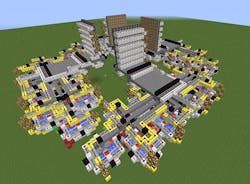How did many of the engineers of the 1960s, 70s, and 80s get started with engineering? With many of the engineers I speak to, it was via tinkering. Tinkering, deconstructing, disassembling a product just to find out how it works and without knowing how to put it back together is the heart of every engineer. Many senior engineers grew up with technology that could fill these curiosities. However, as technology became more complicated the curiosity of the “tinkerer” had to find a new home.
Many senior engineers I talk to say that millennial engineers do not like to work with their hands. They avoid manual labor or figuring out how to build things. These engineers grew up with shop classes or cars that could be taken apart or put back together in their own garages. They knew how to build their own radios, build a car from scratch, and how to weld. So then the question becomes, why did the engineers of today stop mechanical tinkering? The simple answer is it became too expensive.
Let’s examine the cost to fix your car. The average vehicle repair costs have risen faster than the rate of inflation since 2012. According to The State Journal of Springfield, Ill., the cost of auto repair saw an increase of 3.4% in 2014. If we look back at 2012, CARMD.com reports that the average repair costs were up 6.53% for the West Coast and 11.56% for the East Coast. In 2014, repair costs arose 4.6% on the West Coast and 3.9% on the East Coast. Things have improved in recent years. As of 2015, according to CARMD.com, costs went down due to a decrease in labor costs. Labor went down by 4%, causing a 4.7% decrease on the West Coast, and a 6.5% decrease on the East Coast. (See the map below.) However, the cost for repair parts went up 1.5%. Looking at these numbers, the last five years of do-it-yourself car repair has been a costly endeavor. For the young engineers of today, tinkering on that level no longer became feasible. So what did they do? They turned to the computer.
The personal computer was introduced in 1977 with the Apple II. The price point at the time was $1,298; adjusted for inflation, that price comes out to $5,201.40. While expensive upon its release, the price point of PCs has continued to drop and become more affordable to the public over time. If we compare the current cost of an iMac, the top-of-the-line model is offered at $1,499—less than a third of the adjusted price of the original Apple II.
When the mechanics of the world became out of reach, the tinkers went to the computer. They started to code programs, design websites, build computer models, and create entire virtual worlds. Minecraft is one of the most popular games among children today. They can create buildings and complete cities. They get introduced to the world of engineering via computers. Personally, as I entered engineering, I gravitated toward computer-aided design modeling. I found it intuitive, considering that I had grown up using computers my whole life. Modeling, simulating, creating CAD assemblies, laying out drawings, and working out kinematic models is how I found my world of engineering. For many engineers entering today’s world, the area of computers is what the garage used to be; it is the world where we can explore what engineering has to offer.
And now the world of makers has come full circle. With 3D printing, the tinkerers are starting to build physically. They are constructing prototypes for their virtual designs and even creating their own startup companies. Industries are taking notice, too. Solidworks, for example, now offers an entire virtual ecosystem that will take your design from concept to build. The software helps with the design, runs simulation to ensure its strength, and helps set up the CAD part for 3D print production. The maker space has become the new home of the tinkering engineer. Millennial engineers are not lazy or afraid to get their hands dirty; they just found a new playground to explore.



